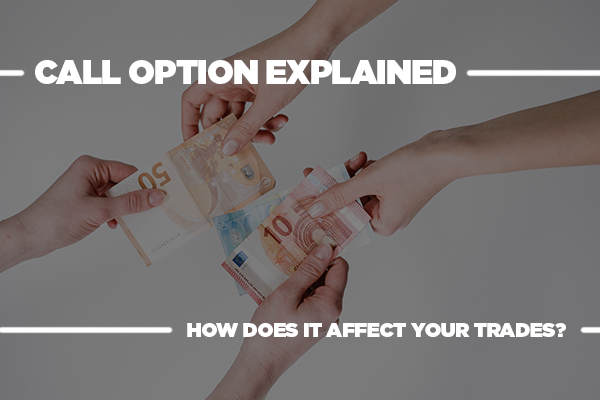Introduction
Whether you are just a beginner or a more seasoned trader, you probably have heard at least once the term ‘options trading’ and its corresponding ones such as ‘call option’, ‘put option’, ‘strike price’. At first glance, it may seem a little bit overwhelming and daunting. But as the knowledge unfolds, you will soon see many hidden attractive opportunities besides the more traditional stock trading.
The main distinction between options and stocks is that stocks represent shares of ownership in individual companies, whereas options are contracts with other investors that allow you to make profits betting on which direction you believe a stock price will head. Despite their differences, they do not eliminate the profitable chances of one another but instead, complement each other within a portfolio. Let’s learn more about options trading and how its call option can positively change your trading game.
Understanding Call Option
An Overview of Options Trading
Options trading is usually considered a more flexible way of trading than regular stock trading. Stock trading is a type of equity trading that is more straightforward and suitable for all kinds of traders – from beginners to long-term investors – even without going too deep into more complex concepts and complicated strategies. With stock trading, you can just simply buy a stock and wait for its price to rise before selling it for some profits. In contrast, options trading is proved to be much more challenging.
If you are an investor that is looking for a more flexible method of investing with adjustable time frames and minimal possible risk, options trading may just fit you right up. Options trading is a type of derivative trading, referring to the act of trading contracts where the buyer has the right, but not the obligation, to buy a call option or to sell a put option the underlying asset at a certain value before the expiration date.
With options, the time spent on your trades is considerably shorter and the outcomes are more reactive to your adjustments. This is the reason why options trading is greatly popular for traders who buy and sell regularly.

What is a Call Option?
As stated above, call option refers to the buying process of options trading where the buyer gets the right but not the obligation of a financial asset – stock, bond, commodity, and the like – at a specific price, which others referred to as the ‘strike price’, within a specific time.
Most of the time, a call buyer profits when the price of the underlying asset increases and has to pay a sum of money called premium to the seller should the call be exercised. Unlike other commodities in trading, options will completely lose their value and become worthless when the expiration date strikes.
For a better understanding, let’s take a look at a demonstration below:
Suppose there are 100 shares with a stock price of $100 each and our further trades do not include any commission or fee. These are currently offered for buying as 100 call options with the strike price of $105 each until reaching the expiration date. You, as the call buyer, see the opportunity and expect that the stock price will continue to rise above the $105 level. Any excess over that value will be your payout.
Here, if you exercise the call when the stock price strikes $110, you buy those 100 shares for $105 each (strike price) and receive a total gain of $500. Remember that the call buyer must pay the stock owner a premium. Let’s just say it costs $1 per share. Now, the premium for paying the seller is $100 and your net return now is $400.
Types of Call Options
Call options are usually divided into two types depending on the perspective of those who involve in the trade, described below:
Long Call
A long call refers to, via the eyes of the buyer, a standard purchased call option where the buyer pays for the right to buy the underlying stocks at the strike price with an additional cost known as premium. Long call options are carried out when the buyer believes in the positive forecast of the asset and wants to achieve its upside potential value if the stock price manages to increase.
Such a process is meant for speculation and common to traders who take chances purchasing call options from big technology companies occasionally launching impactful products. If their stock prices appreciate after successful launches, the call buyers will surely benefit too.
Short Call
A short call often refers to the obligation to sell the shares from the perspective of the seller. He with the short call position receives the premium as the payment of the option but is also obligated to sell the shares at the strike price before the expiration date if the buyer decides the option is exercised.
Short call options are meant for boosting income and are often utilized in the ‘covered call strategy’ where you simply sell the stock that you already own for the lowest risk possible. To the seller, these contracts pose an opportunity risk if the stock you sell takes a sudden uptrend and greatly increases its stock price, making you lose all the profit that once has been yours.
Common Call Options Strategies
Call options sellers, or writers for short, sell contracts in hope that they will expire worthless at the expiration date, thus helping the writers make profits from the premiums paid to them. As a result, losses will happen to them when the call buyers decide to exercise the options and receive gains as the stock prices surpass the strike price. Below are some of the most common call options trading strategies:
Covered Call Option
In this strategy, you, the stockholder, seek to generate income by writing an option for another investor to buy at a price (the strike price of the option) greater than the current stock price. You own the stock and can deliver the asset if the position is executed, hence the name ‘covered call’.
The option writer profits from the situation where the stock price rises but fails to reach the value of the strike price as the call buyer will not exercise the option, thus making the contract expired worthless. The writer can continue to repeat the process and benefit from paid premiums from option buyers.

Naked Call
In contrast to the covered call option strategy, a naked call strategy is where the writer sells a call option without being the rightful owner of the underlying stock, hence the name ‘naked’ – basically equivalent to ‘uncovered’. Therefore, the option seller is also not protected from potential losses if the price movements suddenly become fluctuate.
If the option is exercised, the writer has to provide the shares even if he does not own any to the option buyer. As obligated, the call writer must buy the stock at the current market price to fulfill the contract. The losses from this strategy lie in the difference between the current market price and the strike price.
Conclusion
Call option, as well as its counterpart put option, is indeed a broad topic when it comes to options trading. If you are currently a traditional stock trader, there may be even a feeling of being overwhelmed when first reading this call options trading for beginners’ knowledge. As they always say, no pain no gain, more articles are coming to help you get the hang of how to buy call options profitably. So, stay tuned!



